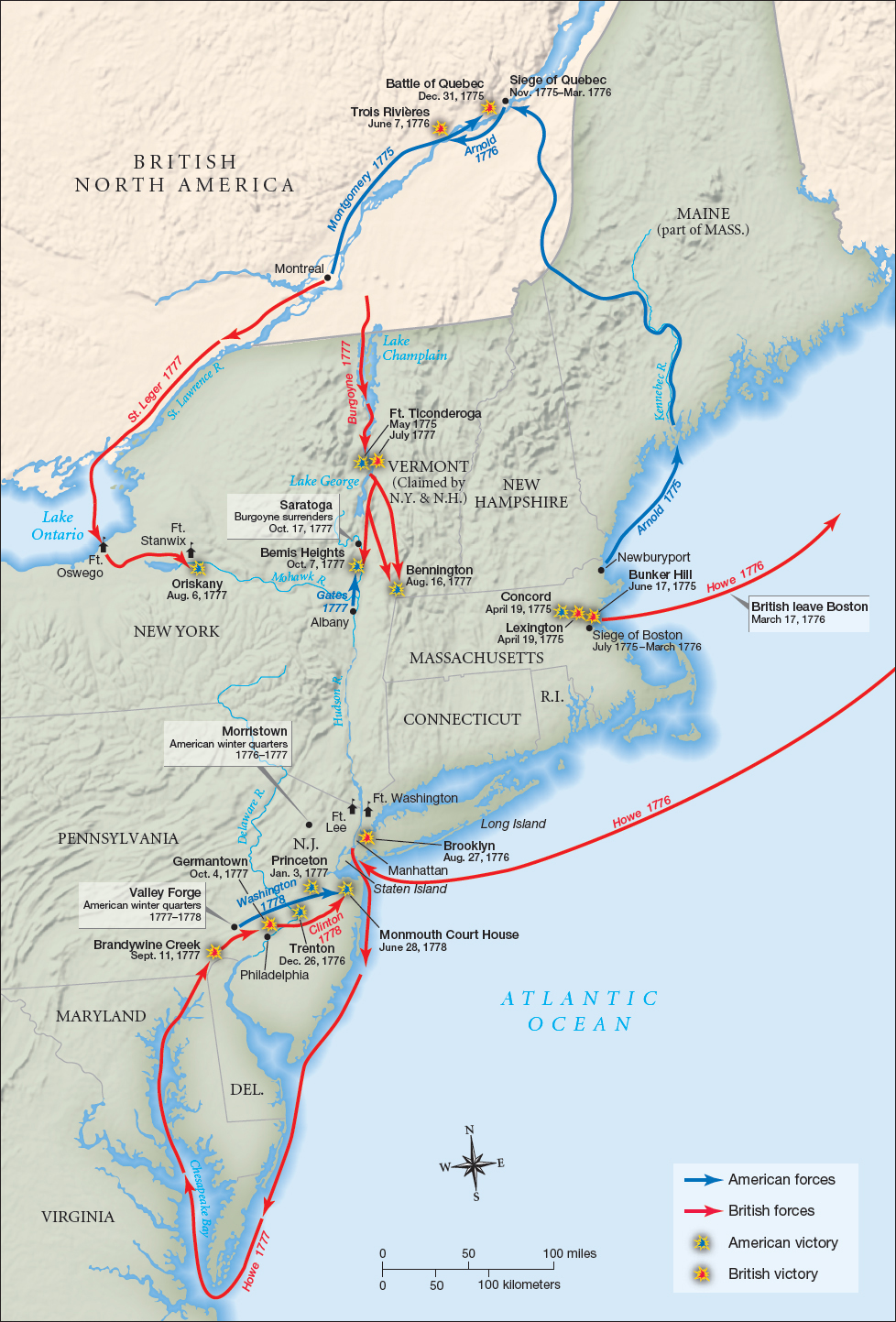A Critical Year of Warfare
The British and Continental armies emerged from their winter camps in the spring of 1777. The British forces, including regular army units, American loyalists, Indian allies, Hessians, and naval men-of-war, were concentrated largely in New York City and Canada. The Continental forces, numbering fewer than 5,000 men, were entrenched near Morristown, New Jersey, far from the patriot centers of New England and from the coastal areas controlled by the British army and navy. Although the Continental Congress had returned to Philadelphia, it feared that the British would seek to capture the city and split the United States in two.
General Howe also believed that the key to victory was capturing Philadelphia, and he hoped that success there might lead the patriots to surrender. Washington’s force was too small to defeat Howe’s army, but it delayed his advance on the capital city by attacks along the way. En route, Howe learned that he was still expected to reinforce General John Burgoyne’s soldiers, who were advancing south from Canada. Too late to redirect his efforts, Howe continued to Philadelphia and captured it in September 1777. Meanwhile Burgoyne and his 7,200 troops had regained control of Fort Ticonderoga on July 7. He continued south along the Hudson valley, but by late July his forces stalled as they waited for supplies from Canada and reinforcements from Howe and General Barry St. Leger.
In July, St. Leger had marched east through New York State while Joseph Brant and his sister Molly Brant, a powerful Indian leader in her own right, gathered a force of Mohawk, Seneca, and Cayuga warriors to support the British forces. But on August 6, they suffered a stunning defeat. At Oriskany, New York, a band of German American farmers led by General Nicholas Herkimer held off the British advance, allowing General Arnold to reach nearby Fort Stanwix with reinforcements. On August 23, the British and Indian troops were forced to retreat to Canada (Map 6.1).

General Howe’s reinforcements never materialized, and Burgoyne now faced a brutal onslaught from patriot militiamen. Vermont’s Green Mountain Boys, Continental soldiers under the command of Generals Horatio Gates and Benedict Arnold, and their Oneida allies also poured into the region. In September, patriots defeated the British at Freeman’s Farm, with the British suffering twice the casualties of the Continentals. Fighting intensified in early October, when Burgoyne lost a second battle at Freeman’s Farm. Ten days later, he surrendered his remaining army of 5,800 men to General Gates at nearby Saratoga, New York.
The Continental Army’s victory in the Battle of Saratoga stunned the British and strengthened the patriots. It undercut the significance of Howe’s victory at Philadelphia and indicated the general’s misunderstanding of the character of the patriot cause and the nature of the war he was fighting. The patriot victory gave hope to General Washington as his troops dug in at Valley Forge for another long winter and to members of the Continental Congress who had temporarily retreated to York, Pennsylvania. It also gave Benjamin Franklin greater leverage to convince French officials to support the American cause.